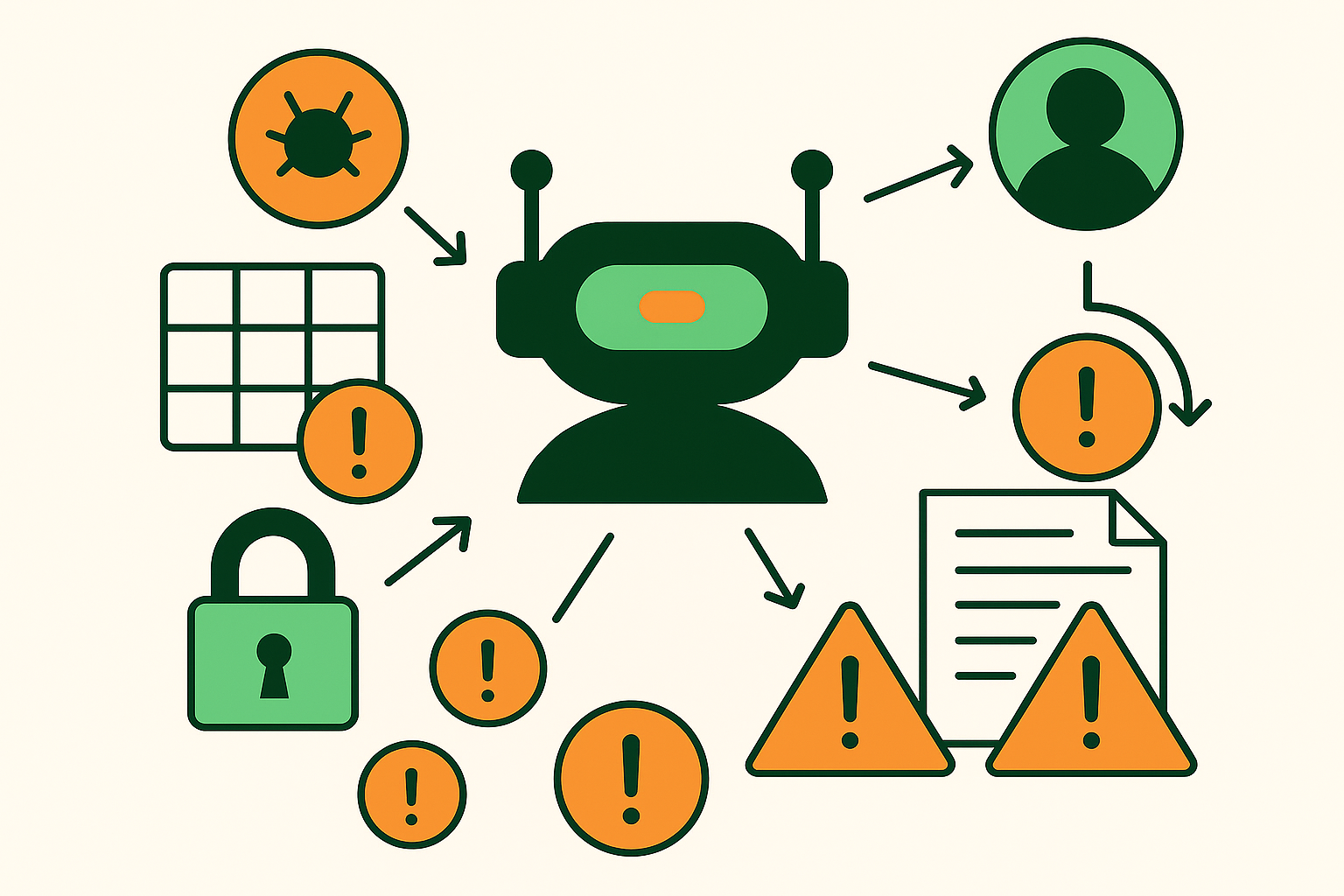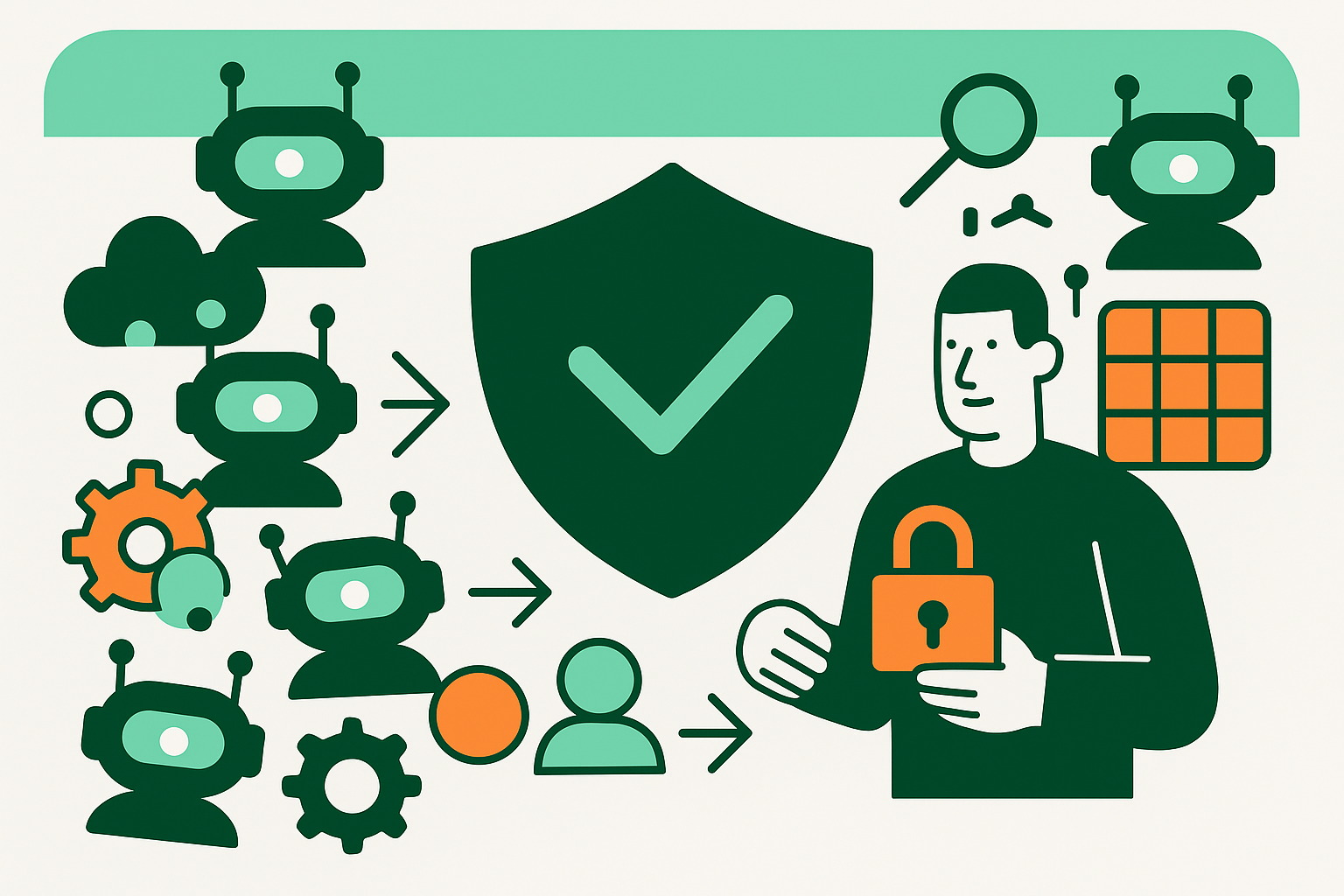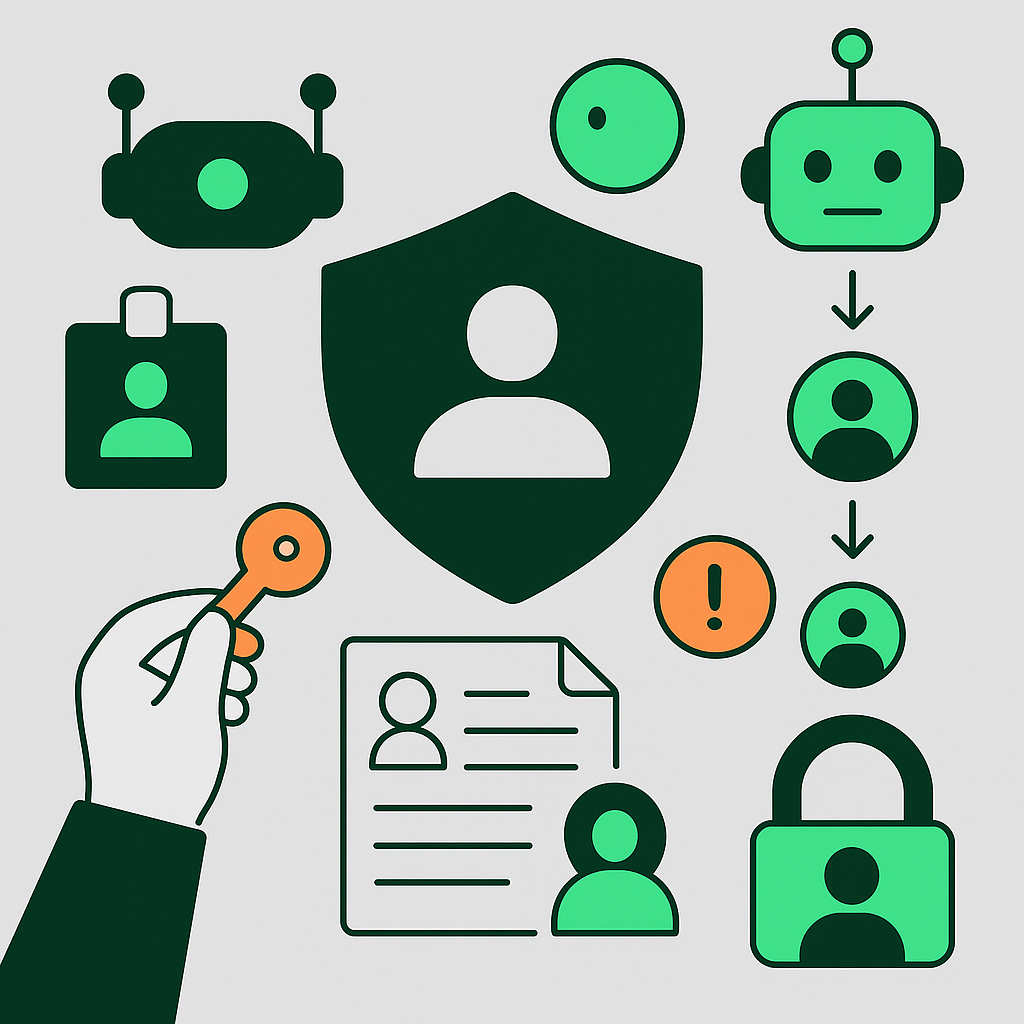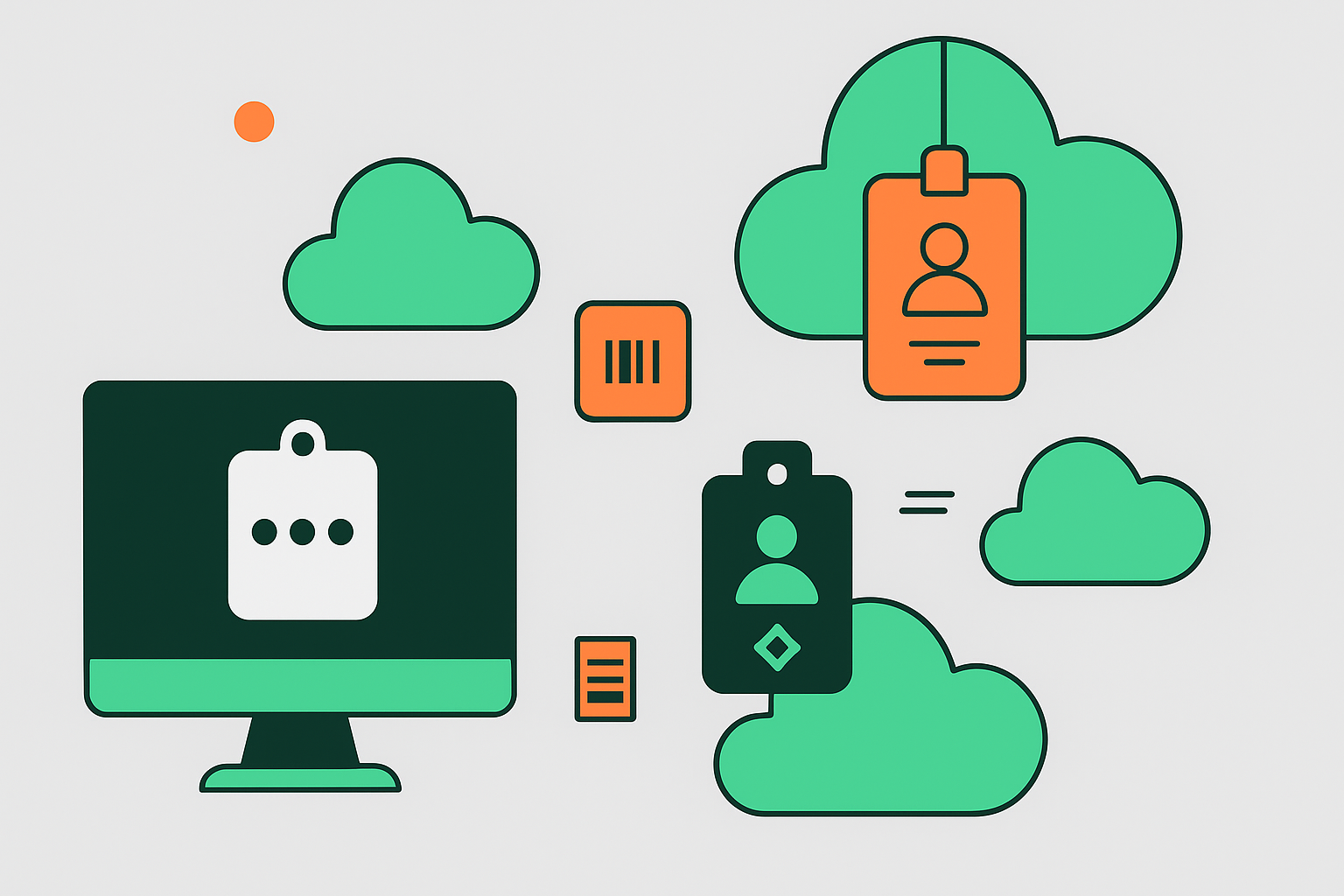The Top 10 Identity-Centric Security Risks of Autonomous AI Agents

As autonomous AI agents become key actors in modern enterprise environments, they’re transforming how work gets done, but also introducing a new set of cybersecurity risks. These systems, capable of making independent decisions and operating at machine speed, create challenges that traditional identity and access management (IAM) models were never built to handle.
In today’s organizations, non-human identities (NHIs), AI agents, bots, service accounts, and API-driven processes, already outnumber human users by ratios as high as 100:1. As enterprises adopt more AI systems, this imbalance will continue to grow, amplifying the security and governance challenges tied to these identities.
CISOs and identity leaders must evolve their IAM strategies to secure this rapidly expanding population of autonomous AI agents. Our new report, The Top 10 Identity-Centric Security Risks of Autonomous AI Agents, examines the most critical threats facing organizations today and what can be done to mitigate them.
1. Orphaned and Unmanaged AI Identities
AI agents often outlive their original purpose. Without lifecycle management, these orphaned agents linger in systems, retaining access privileges long after they should have been retired. Each unmonitored AI identity becomes a potential backdoor for attackers.
Key takeaway: Assign ownership, enforce lifecycle policies, and regularly audit every AI agent to prevent unmanaged identities from becoming invisible risks.
2. Excessive Permissions and Privilege Creep
Too often, AI agents are given broad or inherited permissions for convenience. Over time, their access expands unchecked, violating least-privilege principles and creating opportunities for abuse if compromised.
Key takeaway: Continuously right-size privileges and implement fine-grained access controls to ensure each AI agent operates within tightly defined boundaries.
3. Static Credentials and Weak Authentication
Because AI systems can’t use MFA, they frequently rely on static credentials like API keys or hard-coded passwords. These long-lived secrets rarely rotate, making them prime targets for attackers.
Key takeaway: Replace static credentials with short-lived tokens or certificates, automate secrets rotation, and adopt cryptographic identity proofs for stronger machine authentication.
4. Identity Spoofing and Impersonation
Weak identity verification between systems allows attackers to appear as legitimate AI agents, hijacking trust and performing malicious actions under false pretenses.
Key takeaway: Require unique credentials for every AI agent, enforce mutual authentication (mTLS), and actively monitor for credential misuse or anomalous access patterns.
5. Lack of Traceability and Auditability
When AI agents act autonomously, insufficient logging makes it difficult to understand what they did or why they did it. Without detailed audit trails, security teams can’t distinguish between malicious actions and normal ones.
Key takeaway: Enable comprehensive logging for all AI activity, centralize audit data, and establish a clear trail of agent decisions to ensure accountability.
6. Inadequate Behavioral Monitoring
Most monitoring tools are designed for humans, not machines. Without behavioral baselines for AI agents, anomalous or malicious activity can go unnoticed.
Key takeaway: Establish behavior baselines, monitor deviations in real time, and treat AI agents as first-class identities in your identity analytics and threat detection systems.
7. Explosion of Non-Human Identities and Secrets Sprawl
As AI use scales, so does secrets sprawl, the uncontrolled proliferation of tokens, API keys, and service accounts across environments. The sheer number of secrets makes them impossible to manage manually.
Key takeaway: Automate discovery and governance of all AI agents and non-human identities, and centralize credential storage with strong secrets management practices.
8. Prompt Injection and Malicious Instructions
AI agents are uniquely vulnerable to prompt-based attacks, where malicious input manipulates their logic. A well-crafted prompt can trick an agent into performing unauthorized actions from leaking data to altering configurations.
Key takeaway: Sanitize inputs, restrict agent privileges, and implement hard-coded guardrails that prevent AI systems from executing high-risk commands without human verification.
9. Compromised Agents Abusing Trusted Access
Once an AI agent is compromised, it can become a trusted insider threat. Because it operates with legitimate credentials, traditional defenses may not recognize its malicious actions.
Key takeaway: Monitor for abnormal activity, enforce just-in-time access for sensitive operations, and deploy automated containment workflows to revoke compromised credentials instantly.
10. Regulatory and Compliance Risks
Emerging regulations like the EU AI Act are extending compliance expectations to AI agents and systems. Poorly governed AI accounts can lead to audit failures, fines, and reputational damage.
Key takeaway: Apply the same IAM rigor to AI agents as to human users, such as unique identities, least privilege, audit trails, and documented lifecycle management.
Every AI Agent Has Identities and You Need to Secure Them
Agentic AI is redefining the enterprise security landscape. To keep pace, organizations must treat AI agents as first-class identities, so they are authenticated, authorized, monitored, and governed with the same precision as any human user.
Token Security helps enterprises adopt AI safely and securely, delivering full visibility, control, and governance over AI agents and NHIs.
Download the full report, The Top 10 Identity-Centric Security Risks of Autonomous AI Agents, to explore each agentic AI risk in detail and learn how to protect your enterprise from the next generation of identity threats.
.gif)
%201.png)





